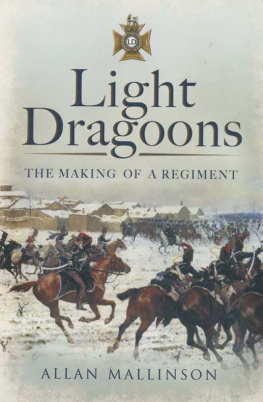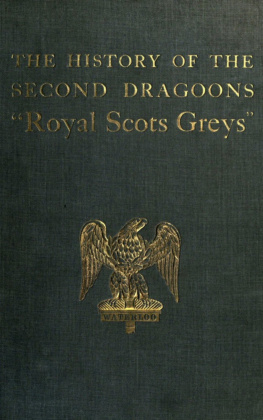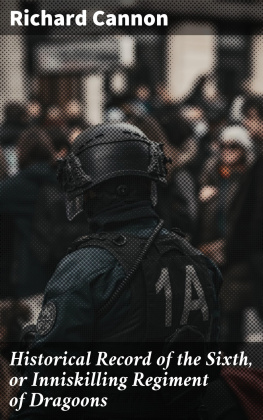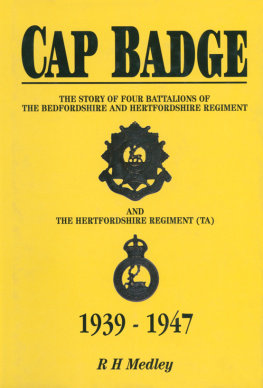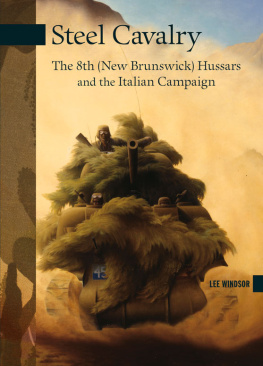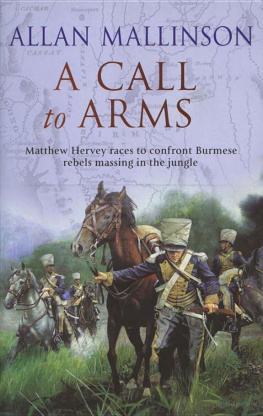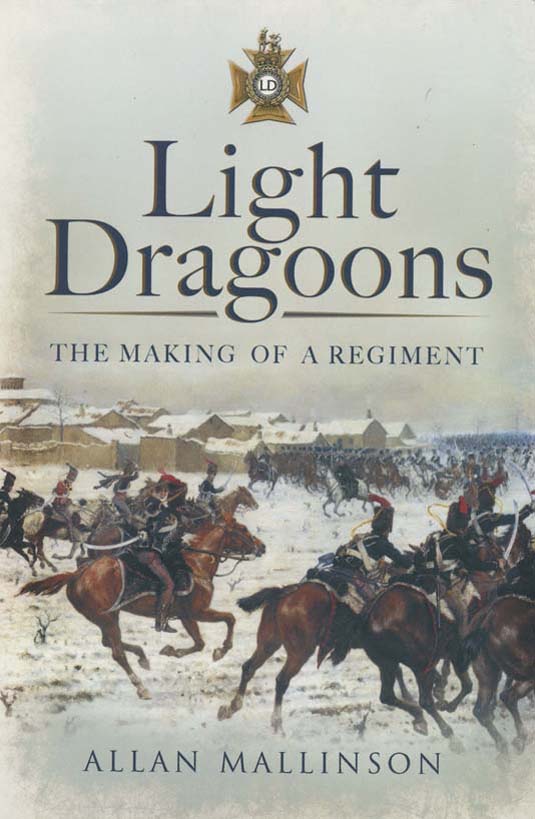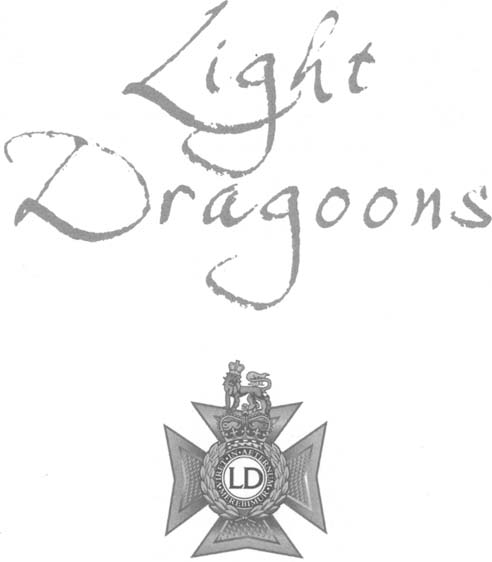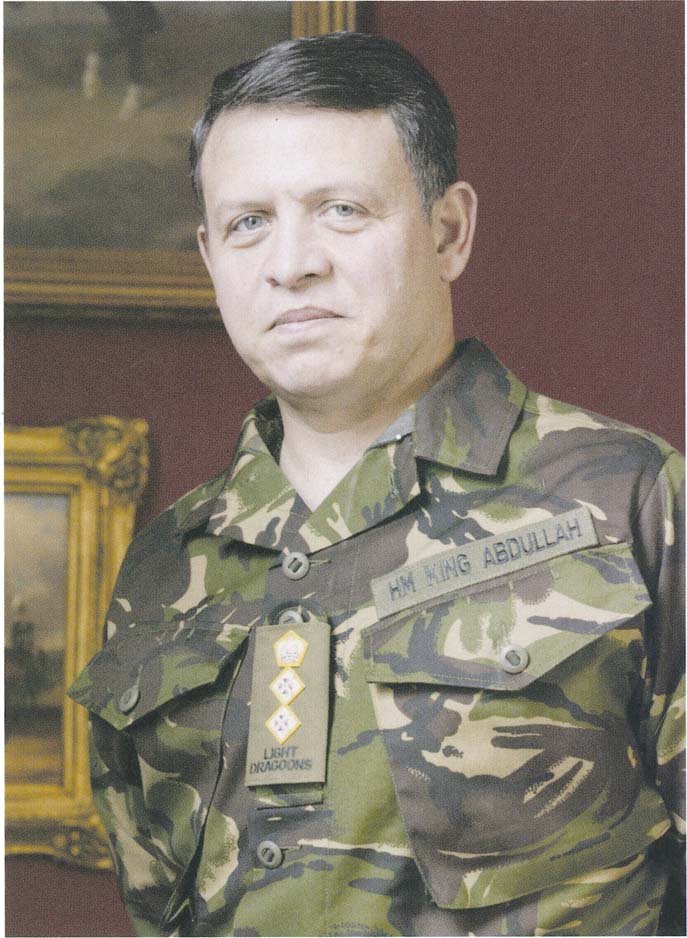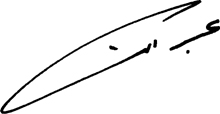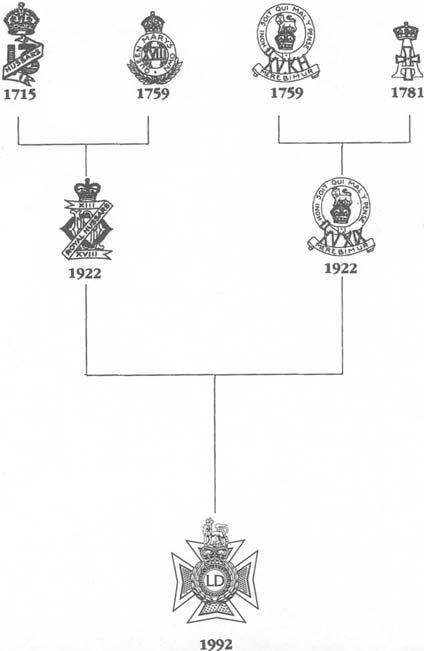What is there like the army? she interrupted I like the cavalry better than anything I know; and the dragoons the best of the cavalry!
Thomas Hardy, The Trumpet Major


Pen & Sword
MILITARY
First published in Great Britain in 1993 by
Leo Cooper
Reprinted in 2006 and 2012 by
PEN & SWORD MILITARY
An imprint of
Pen & Sword Books Ltd
47 Church Street
Barnsley
South Yorkshire
S70 2AS
Copyright Allan Mallinson 1993, 2006, 2012
ISBN 978 1 84884 880 1
The right of Allan Mallinson to be identified as Author
of this work has been asserted by him in accordance with the
Copyright, Designs and Patents Act 1988.
A CIP catalogue record for this book is
available from the British Library
All rights reserved. No part of this book may be reproduced or transmitted in
any form or by any means, electronic or mechanical including photocopying,
recording or by any information storage and retrieval system,
without permission from the Publisher in writing.
Printed and bound in England
By CPI Group (UK) Ltd, Croydon, CR0 4YY
Pen & Sword Books Ltd incorporates the Imprints of Pen & Sword Aviation,
Pen & Sword Family History, Pen & Sword Maritime, Pen & Sword Military,
Pen & Sword Discovery, Wharncliffe Local History, Wharncliffe True Crime,
Wharncliffe Transport, Pen & Sword Select, Pen & Sword Military Classics,
Leo Cooper, The Praetorian Press, Remember When,
Seaforth Publishing and Frontline Publishing
For a complete list of Pen & Sword titles please contact
PEN & SWORD BOOKS LIMITED
47 Church Street, Barnsley, South Yorkshire, S70 2AS, England
E-mail: enquiries@pen-and-sword.co.uk
Website: www.pen-and-sword.co.uk
CONTENTS
MAPS
I am very pleased that after almost a decade and a half since the formation of The Light Dragoons, a second and updated edition of the Regimental history is being published. In the foreword to the first edition, my late predecessor, Her Royal Highness the Princess of Wales, declared the history to be a fitting way of expressing the determination of the serving and retired members of the 13th/18th and 15th/19th Hussars, that the amalgamation should be outstandingly happy and successful from the outset. Anyone who knows the Regiment knows that that determination has truly been rewarded.
In this history, the author draws together the many common threads of the six distinguished light cavalry regiments whose individual histories over nearly 300 years led to the formation of the new regiment on the 1st of December 1992. He also places the major events, campaigns and battles experienced by those regiments in a wider historical setting, so that we can understand clearly the important role played by our forebears in the challenges, triumphs and disasters of the British Nation. And, in the new chapter he does the same, for The Light Dragoons were involved from the outset in events that have shaped, and continue to shape, the world in the late-Twentieth and the Twenty-first Centuries.
We can all take pride in carrying forward the fine traditions and standards of our antecedent regiments, and in the achievements of The Light Dragoons. I, therefore, commend this book to all ranks and to the wider regimental family. I commend it, too, to those unconnected with the Regiment who would wish to see what it is that makes the British Army today such an effective and respected institution.
Abdullah II Ibn Al Hussein
A REGIMENT has two purposes. It is an administrative unit which, under the law, trains, disciplines and marshals men in arms for the preservation of a nations peace and security it has also to evoke from its members an habitual self-mastery and capacity for comradely selflessness and obedience which will enable them willingly to sacrifice their bodies and lives in the course of duty.
Sir ARTHUR BRYANT, Jackets of Green
That great, patriotic historian, Sir Arthur Bryant, wrote those words three decades ago in his glorious history of The Rifle Brigade. I quoted them in the preface to the first edition of Light Dragoons because I thought them singularly apt for a history of both the 13th/18th Royal Hussars (Queen Marys Own) and 15th/19th The Kings Royal Hussars, who on 1st December 1992 amalgamated to become The Light Dragoons and in turn for the history of their forebear regiments, who had all at one time or another borne the separate numbers 13th, 15th, 18th and 19th Light Dragoons. I did not think, then, that the words could still be quite so apt a decade and a half into that amalgamation. Apt and poignant, as I trust the additional chapter in this new edition will show.
That first edition sparked considerable interest outside the Regiment. It was mainly, I think, through curiosity: no regiment had before or has since published a consolidated history for an amalgamation. The late Field-Marshal Lord Carver, a man of impeccable military and literary credentials, reviewed the book in The Spectator under the headline Four Into One Will Go. For readers without the benefit of old-fashioned arithmetic, this refers to the first step in the process of division a clever allusion, though amalgamation is of course the opposite of division. What it was saying was that the historical evidence suggested the amalgamation would be a good one. The Light Dragoons first decade and a half has been a triumphant justification of that prediction. Indeed, the evidence speaks for itself, and could not be better summarized than in the words of General the Lord Guthrie, former Chief of the Defence Staff, which open the additional chapter of this new edition.
We may say with certainty now, therefore: four into one will go. Indeed, they have gone happily and in fine cavalry style.
ALLAN MALLINSON
The Cavalry and Guards Club
April, 2006
It is right to have some cavalry to support and assist infantry, but not to look upon them as the main force of an army, for they are highly necessary to reconnoitre, to scour roads and to lay waste an enemys country, and to cut off their convoys; but in the field battles which commonly decide the fate of nations, they are fitter to pursue an enemy that is routed and flying, than anything else.
MACHIAVELLI, The Art of War
Foundations of the Regular Army; Mundens Dragoons; Eliotts Light Horse: Emsdorf; Droghedas Light Horse; 19LD.
When the Northern Light Horse swept up a hillside in France in 1544 in a demonstration of their speed and manoeuvrability, Charles V, the Holy Roman Emperor, was said to have cried out with honest delight. Three hundred years later another foreign observer, the French General Bosquet, said of the Light Brigades advance towards the Russian guns at Balaklava,

